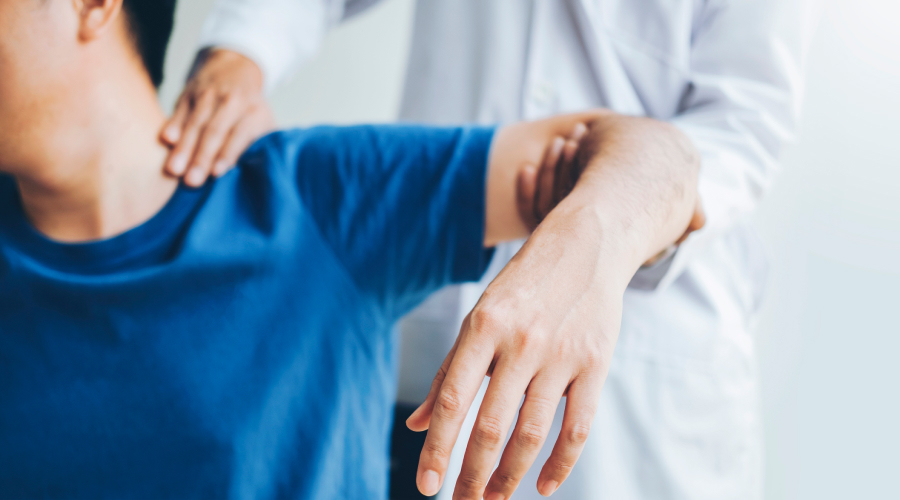
There’s a common misconception that older individuals are the only ones who suffer a shoulder injury from a fall. Whether it’s a slip on a slick sidewalk or a tumble during your favorite sport, anyone can suffer a shoulder injury. The shoulder is one of the most mobile joints in the body, but its flexibility makes it particularly susceptible to trauma.
Some of the most common symptoms of a shoulder injury may include:
- Pain and swelling
- Tingling
- Numbness
- Weakness
- Shoulder spasms
- Limited mobility
- Diminished strength
Most of the time, shoulder pain and injuries can be resolved non-operatively. In fact, over 90% of shoulder problems do not need surgery to heal. However, if the pain or discomfort lingers, it could signify a larger problem, such as:
- A dislocation
- Labral tearing
- Rotator cuff tear
- Fracture
It’s important to seek prompt medical treatment, as a wait-and-see approach might exacerbate the problem and result in long-term impairment, pain, or dysfunction.
Treatment for a Shoulder Injury After a Fall
Just like the injuries themselves, treatment plans can vary greatly from patient to patient. By working with a sports medicine physician, you’ll be able to determine what treatment options are best for you.
The most common treatment option is physical therapy, where an orthopaedic physician or physical therapist prescribes a series of exercises that are designed to help you regain your shoulder function.
In some cases, ultrasound-guided cortisone injections or platelet-rich plasma (PRP)—a procedure that uses the patient’s blood chemistry to heal tendon and ligament injuries—may be used in conjunction with physical therapy. These methods may be a great alternative for those with more serious conditions who aren’t ready for surgery because they have shorter recovery times and carry less risk than surgical options.
Access Sports Medicine patients can also take advantage of the new Lipogems treatment, an FDA-approved technology that addresses arthritis and other damaged musculoskeletal tissues. This process uses your own powerful fat, which is collected, sized, and filtered before being strategically injected into the injured area to support the repair, replacement, and reconstruction of damaged or injured tissue.
Surgery is generally only considered when a patient has failed to recover after more conservative treatments, and if it becomes the only effective option to relieve pain and restore functionality.
Access Sports Medicine Puts You on the Path to Recovery
Don’t let a fall keep you down. Our friendly doctors are committed to getting you on the path to recovery. With locations and walk-in clinics throughout the Seacoast, you can find a time and location that is most convenient for you. Request an appointment today to learn more.



